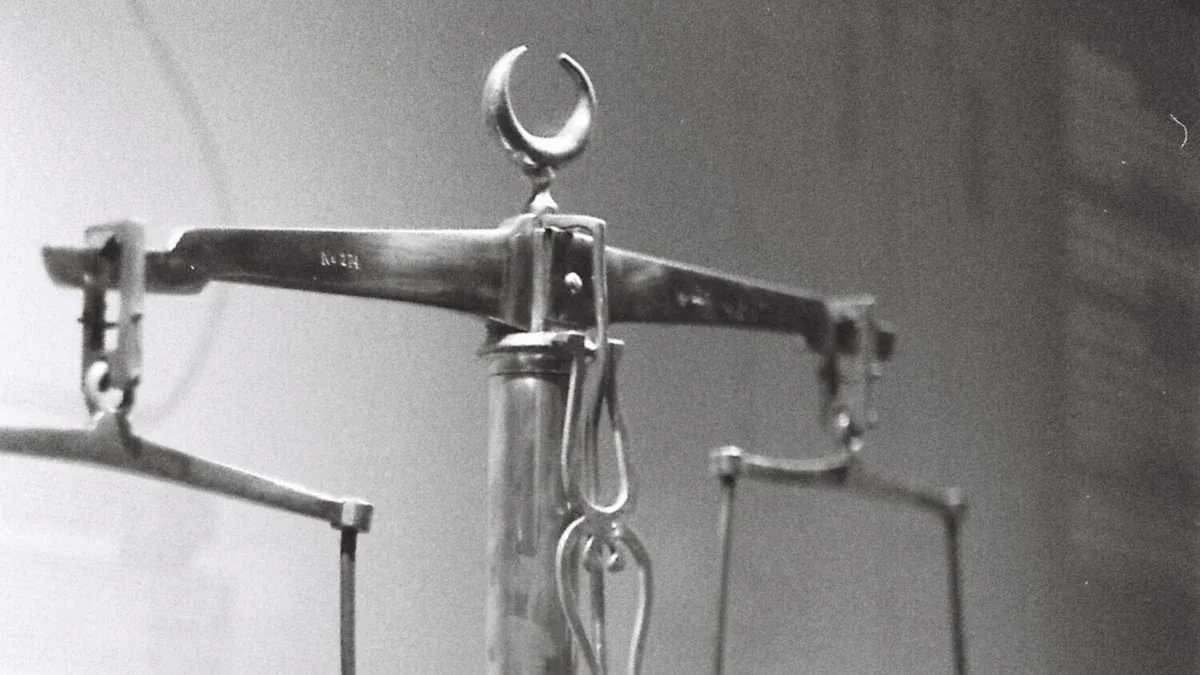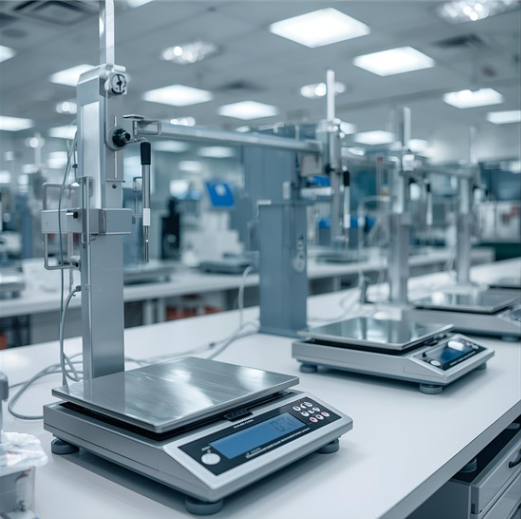The History of Weighing Scales reveals how measuring tools have advanced from simple balance beams used in ancient trade to today’s highly accurate digital devices. Understanding this evolution shows how improvements in precision and technology have shaped commerce, science, and everyday life. By exploring key milestones in weighing innovation, readers can better appreciate the vital role scales continue to play across modern industries and personal use.

Ancient Beginnings: History of Weighing Scales
Early Balances in Egypt and Mesopotamia
The history of weighing scales began around 2000 BC. Ancient Egyptians and Mesopotamians used balance scales to measure grains, gold, and other goods. These early devices marked the start of the timeline of measuring and weighing.
Balance scales had two pans suspended from a beam. People placed a known weight on one side and the item to be weighed on the other. When the beam balanced, they knew the weight of the item.
Equal-Arm and Beam Scales
Equal-arm balance scales became common in many ancient cultures. The beam rested on a central pivot, and each arm held a pan. This design allowed for accurate weighing of small and large items.
Scale history shows that these devices spread across regions. Craftsmen improved the materials and construction over time. The basic principle of balance scales remained the same for centuries.
Scale History in Trade and Commerce
Balance scales played a key role in early trade. Markets and merchants relied on them to measure goods like spices, metals, and textiles. Accurate weighing protected both buyers and sellers.
The history of weighing scales reveals their importance in daily life and commerce. Scale history also shows how these tools supported the growth of ancient economies. The use of balance scales continued for thousands of years before new technologies appeared.
Mechanical Progress: Evolution of Weighing
Spring Scale Invention and Impact
The evolution of weighing took a major step forward with the invention of the spring scale. This device used a coiled spring to measure force, which allowed for direct readings of weight. The spring scale made the process faster and more portable than earlier balance scales.
Spring scales helped the evolution of weighing by making it easier to weigh items of different sizes. People could use them in many settings, from small stores to large warehouses. The spring scale marked a turning point in the history of weighing scales.
Advancements in Mechanical Scales
Mechanical scales continued to improve as inventors developed new designs. Dial scales, platform scales, and steelyard balances appeared during this period. Each type offered unique benefits for specific tasks.
- Dial scales displayed weight on a circular dial, making readings quick and clear.
- Platform scales allowed users to weigh heavy or bulky items with ease.
- Steelyard balances used a sliding weight on a beam, which increased accuracy for larger loads.
These innovations supported the evolution of weighing by increasing precision and convenience. Mechanical scales became essential tools in factories, markets, and homes. The evolution of weighing during this era set the stage for future breakthroughs.
Limitations of Analog Technology
Despite their advantages, mechanical scales had some drawbacks. Analog technology could not always provide the highest level of accuracy. Factors like friction, wear, and temperature changes sometimes affected results.
The evolution of weighing faced challenges as people demanded more precise and reliable measurements. These limitations pushed inventors to search for better solutions. The next phase in the evolution of weighing would address these issues with electronic technology.
Electronic Era: Digital Weighing Scales

Transition from Mechanical to Electronic
The mid-20th century marked a turning point in the history of weighing scales. Engineers began to replace mechanical parts with electronic components. This change allowed electronic scales to deliver faster and more accurate results.
Electronic weighing scales used sensors and circuits instead of springs or beams. These new devices could measure small changes in force with great precision. People found them easier to use and more reliable than older models.
First Digital Scales and Patents
The first digital scales appeared in Japan in 1965. These early models used electronic sensors to convert weight into digital signals. Inventors filed patents for these devices, protecting their new technology.
Digital weighing scales displayed numbers on a screen instead of using dials or pointers. This made it simple for anyone to read the weight. The digital display became a key feature of modern weight-measuring devices.
Electronic scales quickly gained attention in scientific and industrial fields. Their accuracy and ease of use set a new standard for weighing.
Commercialization and Popularity0
By the 1970s, digital scales entered the commercial market. Stores, laboratories, and homes began to use these electronic weighing scales every day. People liked the clear digital readouts and the compact design.
Trusted manufacturers improved electronic scales by adding features like automatic shut-off and memory functions. Digital weighing scales became more affordable as production increased. Today, digital technology powers most electronic scales found in kitchens, hospitals, and factories.
Comparison & Advantages
Mechanical scales and digital scales each offer unique benefits for weight measurement. Mechanical models use springs or levers to show results, while digital devices rely on electronic sensors. Both types help people perform weight measurements in daily life and industry.
Precision:
Digital scales provide higher precision for weight measurements. They can detect small changes in weight measurement that mechanical scales might miss. Digital models often display results to the nearest gram or even smaller units.
Convenience:
Digital scales stand out for their ease of use. Users can read numbers clearly on a screen, which reduces mistakes. Many digital devices also include features like memory storage or automatic shut-off, making weight measurement faster and simpler.
Cost:
Mechanical scales usually cost less than digital models. They do not need batteries or electricity, which can save money over time. However, digital scales have become more affordable as technology advances.
|
Feature |
Mechanical Scales |
Digital Scales |
|---|---|---|
| Precision | Moderate | High |
| Convenience | Basic | Advanced |
| Cost | Lower | Varies |
People choose between mechanical and digital scales based on their needs. Digital scales offer better accuracy and convenience for most weight measurements. Mechanical scales remain useful for simple tasks and settings where cost matters most.
Modern Innovations: Scale History and Future Trends

Smart Features and Connectivity
Modern scale technologies now include smart features that connect to smartphones and computers. Many scales use Bluetooth or Wi-Fi to send data directly to health apps. Users can track weight, body fat, and other health metrics over time.
Voice assistants and cloud storage have become part of the next evolution in weighing. These features help users set goals and receive feedback instantly.
Advances in Accuracy and User Experience
Modern scale technologies use advanced sensors to improve accuracy. Digital displays show results quickly and clearly. Some scales use multiple sensors to measure body composition, hydration, and muscle mass.
Touchscreens and easy-to-read interfaces make the user experience better. Modern scale technologies often include step-on activation, so users do not need to press buttons. These improvements show how the next evolution in weighing focuses on both precision and convenience.
Future of Digital Weighing
The future of weighing technology will bring even more changes. Experts expect modern scale technologies to use artificial intelligence for personalized health advice. Scales may soon connect with other smart devices to give a complete picture of health.
The future of weighing technology could include sensors that detect more than just weight. Some researchers work on scales that monitor heart rate or blood pressure. These ideas show how the future of weighing technology will shape daily life and healthcare.
Conclusion
The History of Weighing Scales: From Analog to Digital shows how weighing tools evolved from simple balance beams to precise, user-friendly digital devices. Mechanical and electronic innovations have improved accuracy, convenience, and reliability across trade, science, and everyday life. As smart connectivity and advanced sensors continue to develop, weighing technology will play an even greater role in supporting health, industry, and modern living.
